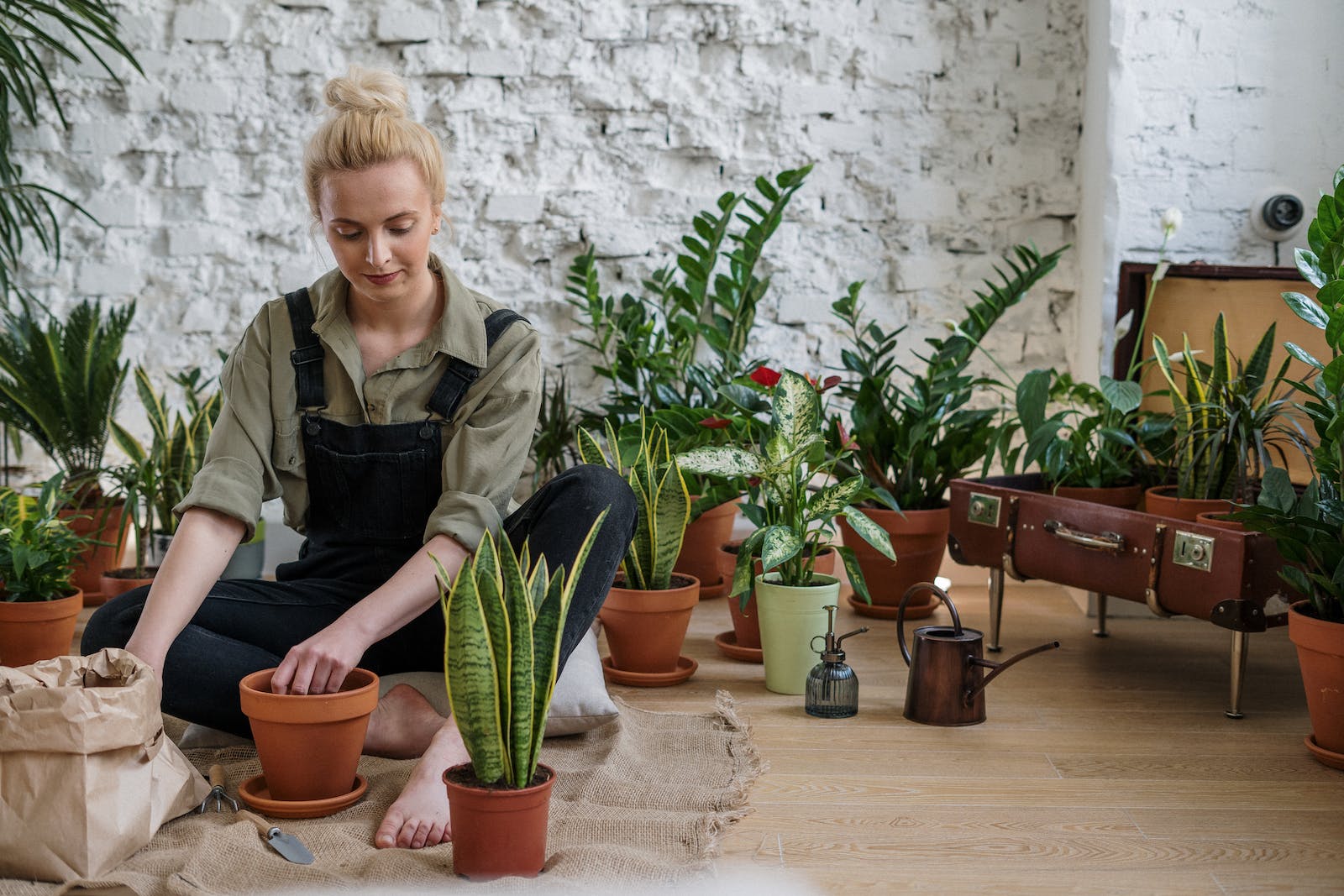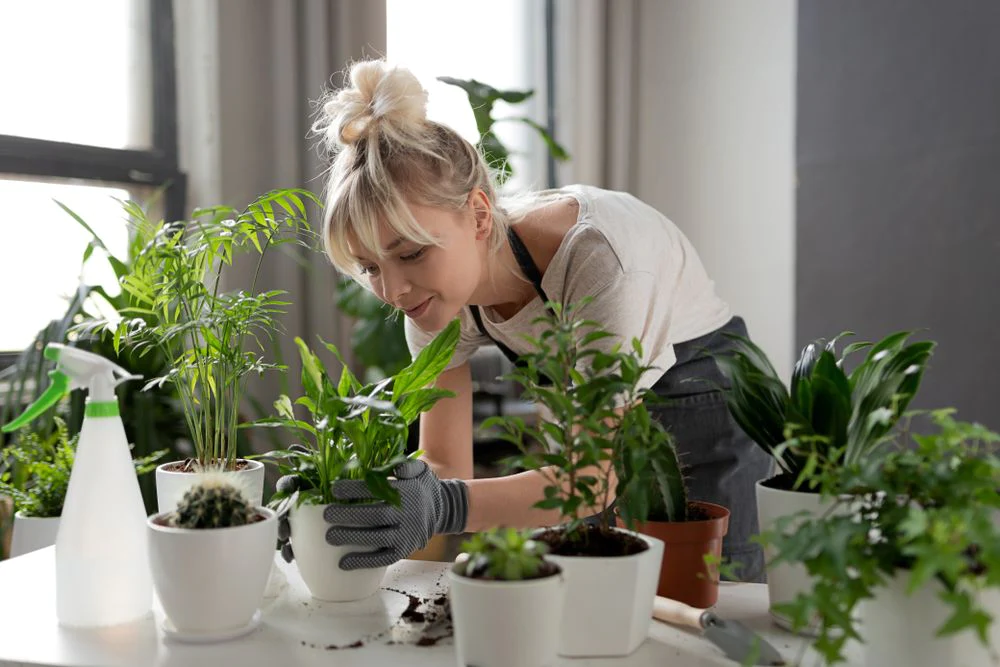Introduction
Welcome to the world of indoor gardening, where nature meets your living space in harmony. In this comprehensive guide, we’ll delve into the nuances of cultivating a flourishing indoor garden, proving that limited space is no obstacle. Let’s embark on a journey to transform your home into a green haven.
Low-Maintenance Plants
In the realm of gardening, low-maintenance plants are a true blessing for both seasoned gardeners and beginners alike. These plants require minimal attention and care, making them an ideal choice for those with busy lifestyles or limited gardening experience. When selecting low-maintenance plants, opt for varieties that thrive in your specific climate and soil conditions. Native plants are often well-adapted to local environments, reducing the need for excessive watering or fertilization.
Additionally, succulents and drought-tolerant plants are excellent choices for low-maintenance gardening. These resilient plants store water in their leaves or stems, allowing them to withstand periods of drought. Incorporating them into your garden not only adds visual interest with unique shapes and textures but also minimizes the need for constant watering.
Indoor Gardening: Plants Suited for Indoor Environments
Indoor gardening has gained immense popularity, bringing the beauty of nature into our homes. Choosing the right plants for indoor environments requires consideration of factors such as light availability, temperature, and space constraints. Low-light houseplants like snake plants, pothos, and ZZ plants thrive in areas with limited natural light, making them perfect for offices or rooms with small windows.
For those with a penchant for fresh herbs, cultivating a windowsill herb garden is a delightful option. Herbs like basil, mint, and chives not only add flavor to your culinary creations but also flourish in indoor settings. Ensure your indoor plants receive adequate sunlight, and consider supplementing with artificial grow lights if needed to promote healthy growth.
Consideration of Light and Space Requirements
When planning your garden, whether indoors or outdoors, it’s crucial to consider the light and space requirements of your chosen plants. Sun-loving plants, such as tomatoes and peppers, thrive in full sunlight, so be sure to allocate a sunny spot in your garden for them. On the other hand, shade-tolerant plants, like ferns and hostas, flourish in areas with limited sunlight or dappled shade.
Understanding the space needs of your plants is equally important. Some plants, like sprawling vines, may require ample horizontal space to spread their foliage, while others, like vertical-growing climbers, are well-suited for smaller garden areas. Proper spacing ensures that each plant receives sufficient airflow, reducing the risk of diseases and promoting overall plant health.
Space-Saving Containers
In the realm of gardening and urban greenery, space is often a precious commodity. Opting for space-saving containers can be a game-changer in maximizing your gardening potential. These containers are designed with efficiency in mind, allowing you to cultivate your favorite plants without sacrificing valuable space.
When selecting space-saving containers, consider vertical gardening solutions like hanging planters, wall-mounted pots, or tiered shelves. These innovative designs not only save horizontal space but also add a touch of aesthetic appeal to your green oasis. Vertical gardens are particularly trendy, making them a great choice for those looking to create an eye-catching display while optimizing their gardening space.
Additionally, compact and stackable containers are excellent choices for space-conscious gardeners. These containers can be easily arranged, creating a tiered effect that not only saves space but also provides a visually appealing arrangement for your plants. Look for containers with modular features, allowing you to customize and adapt your garden layout as needed.
DIY Container Ideas
For the creative souls and budget-conscious gardeners, do-it-yourself (DIY) container ideas provide a unique and personalized touch to your gardening experience. Crafting your own containers not only allows for self-expression but also enables you to repurpose items and contribute to a more sustainable gardening approach.
One popular DIY container idea is to upcycle old wooden crates or pallets into charming planters. This rustic approach not only adds character to your garden but also gives a second life to discarded materials. Another creative option is to use recycled tin cans, mason jars, or wooden boxes as unique plant containers. These items can be easily transformed with a coat of paint or some decorative elements, adding flair to your green space.
Consider experimenting with unconventional items like old boots, tea tins, or even broken terra cotta pots. With a bit of imagination, almost anything can become a quirky and charming home for your plants. Engage in the joy of repurposing while creating a garden that reflects your personality and style.
Proper Drainage Systems
Ensuring proper drainage is a fundamental aspect of container gardening that often goes overlooked. Without adequate drainage, plants can suffer from waterlogged roots, leading to a host of issues such as root rot and poor nutrient absorption. Implementing effective drainage systems is crucial for maintaining a healthy and thriving container garden.
When selecting containers, prioritize those with drainage holes. These openings allow excess water to escape, preventing it from pooling at the bottom and causing root problems. If you fall in love with a container that lacks drainage holes, consider drilling or creating openings to facilitate proper drainage.
In addition to container selection, choosing the right potting mix plays a vital role in ensuring good drainage. Opt for a well-aerated mix that includes ingredients like perlite or vermiculite to promote water drainage and prevent soil compaction. This ensures that water moves freely through the soil, reaching the roots and allowing for optimal plant growth.
Elevating your containers slightly by placing them on pot feet or bricks can also aid in drainage by preventing water from being trapped underneath. This simple yet effective technique helps maintain a balanced moisture level in the soil.

Identifying Light Sources
When it comes to harnessing the power of natural light for your plants, the first step is to keenly identify the light sources in your space. Not all natural light is created equal, and understanding the intensity and direction of sunlight throughout the day is crucial for the health of your plants.
South-facing windows generally provide the most direct sunlight, making them ideal for light-loving plants. East-facing windows offer gentle morning light, suitable for plants that prefer lower light levels. Meanwhile, west-facing windows provide warmer afternoon light. North-facing windows, though typically the dimmest, can still be suitable for certain low-light plants.
By strategically placing your plants near windows that align with their light requirements, you can optimize their exposure and promote robust growth. Regularly assess the light conditions in your space to ensure your plants receive the right amount of sunlight to thrive.
Rotating Plants for Balanced Sun Exposure
To maximize the benefits of natural light, consider rotating your plants regularly. Plants tend to grow towards the light source, and rotating them ensures even growth on all sides. This practice is especially important for potted plants placed near windows.
Rotate your plants every one to two weeks, or as needed based on their growth patterns. This simple action promotes balanced development, prevents lopsided growth, and allows all parts of the plant to receive adequate sunlight. Keep an eye on your plants’ response to rotation, and adjust as necessary to maintain optimal sun exposure.
Supplementing with Artificial Light
While natural light is a powerhouse for plant growth, supplementing with artificial light can be a game-changer, especially in spaces with limited access to sunlight. LED grow lights, for example, provide a spectrum of light that mimics the sun, promoting photosynthesis and supporting plant development.
When choosing artificial lights, consider the specific needs of your plants. Some plants thrive under high-intensity light, while others prefer lower levels. Position the lights at an appropriate distance from the plants, and maintain a consistent lighting schedule to simulate natural daylight conditions.
FAQs: Answering Your Indoor Gardening Queries
How often should I water my indoor plants?
Proper watering depends on factors like plant type and environment. Check the soil moisture regularly and water when the top inch feels dry.
Which plants thrive best in low light conditions?
Snake plants, pothos, and ZZ plants are excellent choices for low-light spaces. They adapt well to indoor environments with minimal sunlight.
Can I use regular garden soil for indoor plants?
It’s recommended to use a well-draining potting mix for indoor plants. Garden soil can compact and hinder water drainage in pots.
What are some low-maintenance indoor plants for beginners?
Spider plants, peace lilies, and succulents are ideal for beginners. They require minimal care and adapt well to indoor conditions.
How do I prevent pests in my indoor garden?
Regularly inspect your plants for signs of pests. Introduce natural predators like ladybugs, and use neem oil as a non-toxic solution to control pests.
Is artificial light sufficient for indoor plants?
Yes, but it’s crucial to choose the right spectrum. Full-spectrum LED lights mimic natural sunlight and support plant growth effectively.
Conclusion
Embark on your indoor gardening journey armed with these tips and tricks. Whether you have a spacious room or a compact apartment, cultivating a thriving indoor garden is a rewarding endeavor. Unleash your creativity, embrace the green, and watch your indoor oasis flourish.
Read more: DIY Home Decor: Budget-friendly and stylish do-it-yourself home decor projects.

